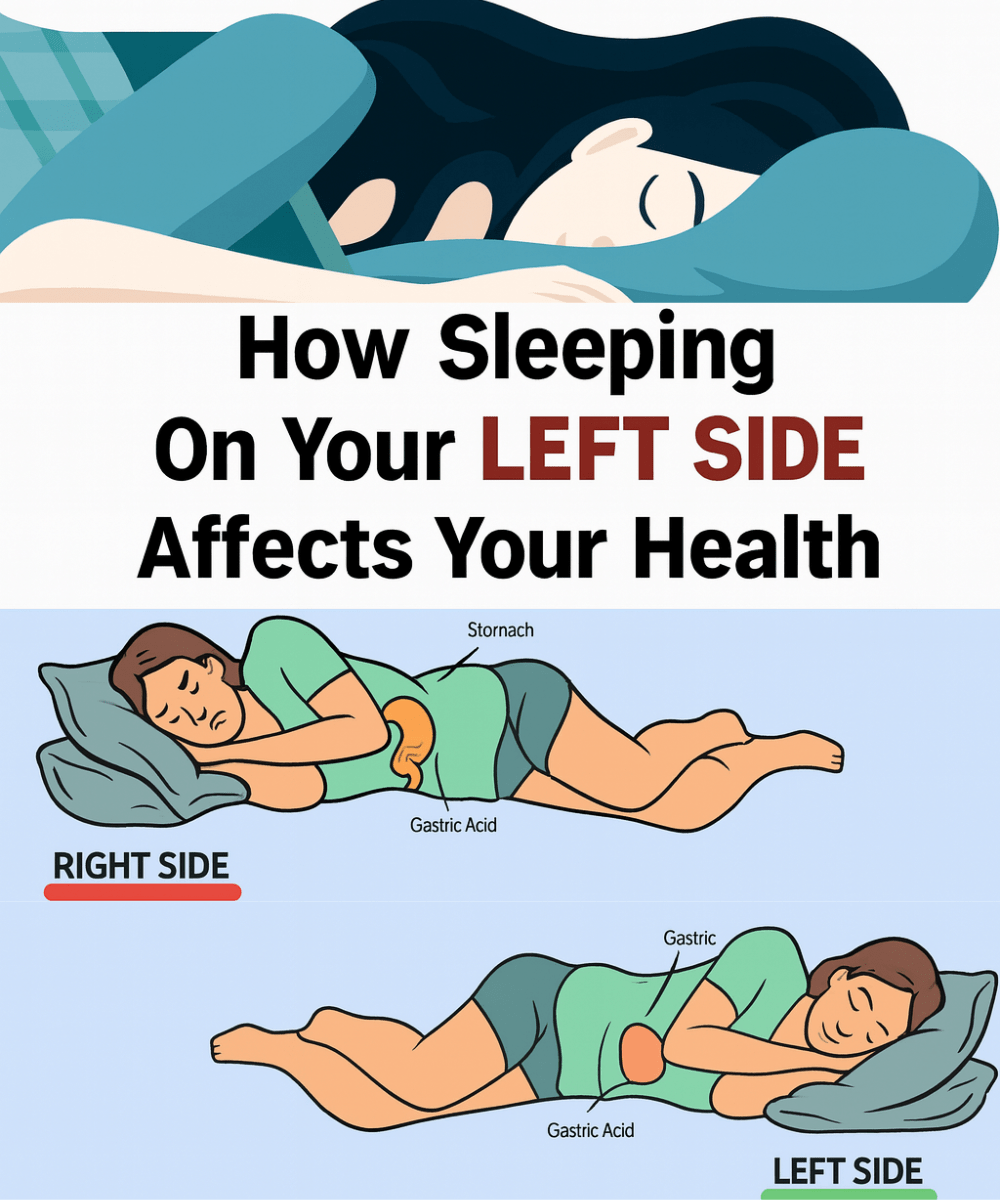We spend roughly one-third of our lives asleep, and yet, few of us give serious thought to the position we choose. While lying on your right side might feel like a natural, comfortable default, medical consensus and anatomical science suggest that this seemingly harmless habit can come with significant, often ignored, hidden drawbacks. These issues silently sabotage your sleep quality, contribute to chronic discomfort, and put unnecessary strain on vital organs.

From the immediate discomfort of acid reflux to subtle, long-term strain on your cardiovascular system and disruption of crucial lymphatic drainage, sleeping on the right side may be actively working against your body’s restorative functions.
Are you experiencing persistent heartburn, morning swelling, or unexplained shoulder pain? Your favorite sleep position could be the culprit. Read on to uncover the four critical ways sleeping on your right side impacts your health and learn the simple, science-backed adjustments that can transform your nights into truly restorative healing cycles.
💔 4 Major Disadvantages of Sleeping on Your Right Side
1. 🔥 The Reflux Reactor: Increased Risk of Heartburn and GERD
This is the most well-documented disadvantage of right-side sleeping, backed by extensive gastroenterological research.
- The Anatomy: The stomach naturally curves to the left side of the body. When you lie on your right side, your stomach sits above the esophagus (the tube connecting your throat to your stomach). The lower esophageal sphincter (LES), the muscular ring that acts as a valve, is partially submerged in stomach acid.
- The Effect: This position encourages gastric contents and stomach acid to pool and easily flow upward into the esophagus. This causes the painful, burning sensation of heartburn and severely worsens symptoms for individuals with GERD (gastroesophageal reflux disease) or gastritis.
- ✅ The Fix: The solution is simple and immediate: shift to your left side. When you lie on your left, gravity keeps the stomach positioned below the esophagus and the LES, drastically reducing the likelihood of acid backflow.
2. 🫀 Potential Strain on the Cardiovascular System
While sleeping on the right side may not harm a perfectly healthy heart, for individuals with pre-existing conditions, the position can be physically demanding.
- The Anatomy: The heart is positioned slightly to the left in the chest cavity.
- The Effect: Sleeping on the right side may place added weight and pressure on the heart and major blood vessels. Individuals with conditions like heart failure or certain arrhythmias often report feeling more uncomfortable or experiencing symptoms when sleeping on their right side compared to their left. The left side allows the heart to beat more freely without the weight of the chest cavity pressing directly against it.
- ✅ The Fix: If you have known cardiac issues, doctors often recommend sleeping on the left side to promote better circulation and reduce direct cardiac strain during sleep.
3. 💧 Disruption of Lymphatic and Circulatory Drainage
Efficient detoxification and circulation are critical while you sleep, and your position directly affects your body’s plumbing.
- The Anatomy: The lymphatic system—your body’s internal waste disposal network—mostly drains into the thoracic duct, located on the left side of the body.
- The Effect: Sleeping on the right side may hinder the natural, gravitational flow of lymph fluid, potentially leading to sluggish detoxification. This can result in increased fluid retention, morning swelling, and a feeling of heaviness in the limbs, as waste products are not cleared efficiently.
- ✅ The Fix: Favoring the left side aids gravity in moving waste products through the lymphatic system, supporting better clearance and reducing morning puffiness or swelling.
4. 🦴 Increased Musculoskeletal Pressure and Nerve Compression
Sleeping on the right side for 6 to 8 hours puts prolonged pressure on one half of your body, leading to misalignment and discomfort.
- The Effect: You risk nerve compression in the arms (leading to tingling or numbness), uneven weight distribution on the hips and lower back, and increased shoulder stiffness. The sustained pressure on the shoulder joint often leads to chronic pain and poor spinal alignment.
- The Fix: Use Strategic Pillows. Place a supportive pillow between your knees to align the hips and lower spine. Use a firm pillow under your head to keep your neck level with your spine. If you must sleep on your side, alternating frequently helps prevent prolonged compression.

👑 So, Which Side is Best? Reclaiming Restorative Sleep
The best position is the one that minimizes long-term health risks and maximizes quality of rest.
- The Left-Side Advantage (The Science-Backed Choice): For those prone to acid reflux, poor lymphatic drainage, or heart conditions, the left side is the preferred and medically recommended posture. It uses gravity to support digestion and circulation.
- The Back Position (The Spinal Ideal): Sleeping on your back (supine) is excellent for maintaining optimal spinal alignment and distributing weight evenly. However, it is not recommended for those with severe sleep apnea or chronic snoring, as it can worsen airway collapse.
- The Key is Movement: If you find yourself rolling to your right side, don’t worry. The body naturally shifts positions multiple times a night. The goal is to start in the optimal position (left side) and support yourself with pillows to minimize time spent on the less advantageous right side.
🛌 Final Thoughts: Mastering the Art of Sleep Posture
Your sleep posture is not a random choice; it’s a powerful lever for your health. Ignoring the disadvantages of sleeping on your right side means risking chronic discomfort, reflux, and compromised circulation.
By making one simple, conscious change—shifting your starting position to the left side—and supporting your spine with proper pillows, you can fundamentally change your body’s ability to repair, digest, and detoxify overnight. Stop letting your sleep position sabotage your health. Start sleeping smarter tonight.






